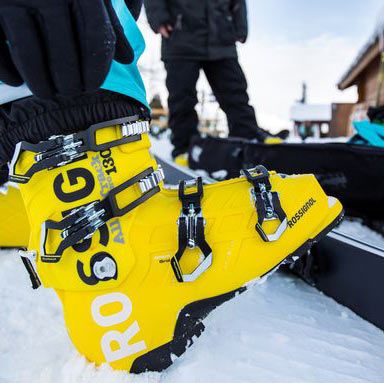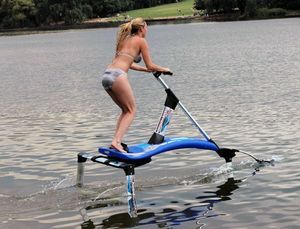 Hydrofoil water-bike
One of the most fascinating modes of water transportation powered solely by human muscle strength is the aquaskipper. From a distance, it might look like a bicycle somehow mysteriously moving across the surface of a body of water. Upon closer inspection, you’ll notice it lacks pedals to power a drive system, and—most intriguingly—has no floats to provide buoyancy. So, how does this structure, which isn’t exactly light on its own and carries a human “rider,” stay afloat and achieve impressive speeds?
Hydrofoil water-bike
One of the most fascinating modes of water transportation powered solely by human muscle strength is the aquaskipper. From a distance, it might look like a bicycle somehow mysteriously moving across the surface of a body of water. Upon closer inspection, you’ll notice it lacks pedals to power a drive system, and—most intriguingly—has no floats to provide buoyancy. So, how does this structure, which isn’t exactly light on its own and carries a human “rider,” stay afloat and achieve impressive speeds?
How Does It Move and Stay Afloat?
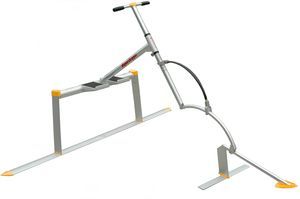 Aquaskipper - aquatic scooter
The aquaskipper’s construction (often referred to as a “water glider”) initially seems fairly straightforward.
Aquaskipper - aquatic scooter
The aquaskipper’s construction (often referred to as a “water glider”) initially seems fairly straightforward.
A broad platform for the rider’s feet is rigidly connected to the primary rear wing through two supports. Extending forward from the platform is a tubular frame ending in a steering hub, which closely resembles that of a bicycle.
The steering crossbar leads into a “bowsprit” that is hingedly connected to a curved support for the front stabilizing wing. Slightly ahead of the front wing is a support with a “wave cutter”—a gliding plate.
Flexibility in the structure is provided by a polymer arch-shaped spring installed between the “bowsprit” and the support for the front wing. And that’s pretty much the entire design.
Some models may include additional floats, which don’t come into play during operation but are there to increase buoyancy in case the aquaskipper tips over.
The entire mechanism is typically made from lightweight aluminum alloys, though the aquatic scooter still weighs about 12 kilograms. So, what keeps it afloat and propels it forward?
This is a textbook example of bionics—applying principles observed in nature to practical and technical innovations.
Why don’t birds fall mid-flight? Because of the lift generated by their outstretched wings. If this is possible in air, it should theoretically work even better in a liquid medium, which is hundreds of times denser than air.
How do aquatic mammals like dolphins or whales achieve incredible speeds? By changing the angle of attack with their powerful “wings”—horizontal tail fins. The aquaskipper operates on these same principles.
The rider controlling this device performs rhythmic jumping movements, transferring force from their legs to the rear wing.
Sargan wetsuit For water sports in cold weather, you’ll need a Sargan wetsuit .
Looking for the best movies about snowboarders and skiers? Check out the top-rated ones on this page .
The Evolution of the Aquaskipper
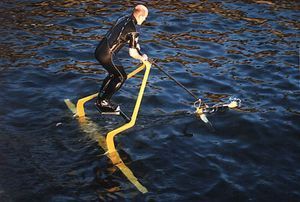 Trampofoil - the predecessor of the aquaskipper
Initial research into this mode of water transportation was conducted by Swedish inventor Alexander Sahlin in the 1990s.
Trampofoil - the predecessor of the aquaskipper
Initial research into this mode of water transportation was conducted by Swedish inventor Alexander Sahlin in the 1990s.
The outcome of his work was a device called the “Trampofoil”, which was patented and showcased to the public in 1993.
The Trampofoil operates based on the same principle described above. The difference lies in how flexibility is achieved—through a flexible curved frame instead of a hinged connection and spring, requiring greater effort from the rider during use.
These “water bicycles” quickly gained popularity and were produced in series for an extended period. Occasionally, they can still be found today.
The aquaskipper, introduced in 2007 with its arched spring design, was lighter due to its reduced frame weight and offered more flexibility. This allowed a broader audience to master this method of water transportation.
Aquaskippers are produced in fairly large quantities and are relatively easy to acquire. Moreover, their prices have dropped significantly—you can find models for about 11–12 thousand rubles.
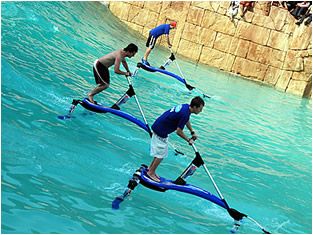 Pumpabike
The concept also evolved to include devices like the “Pumpabike”. This model, patented in 2003 by South African engineer and inventor Mike Puzey, has a slightly different design and appearance but operates on the same principle.
Pumpabike
The concept also evolved to include devices like the “Pumpabike”. This model, patented in 2003 by South African engineer and inventor Mike Puzey, has a slightly different design and appearance but operates on the same principle.
Instead of a frame, the Pumpabike uses a fairly wide plastic board, to which the steering column is rigidly attached. The pilot’s foot platform is equipped with stirrups, which not only enhance comfort but also improve efficiency.
Particularly interesting is the mechanism for adjusting the attack angle of the main wing—it is mounted on a spring-loaded hinged base directly at the point where the wing supports attach to the platform.
The overall design of the pump bike is somewhat more complex than that of a regular aquaskipper, which affects its cost. However, both this and its highest-speed model—holding the absolute speed record for such devices (32.19 km/h)—justify the investment.
Aquaskipper Riding Technique
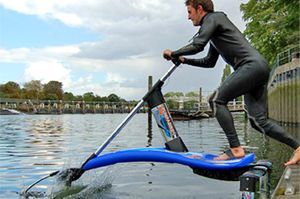 Aquaskipper
One shouldn’t assume that an aquaskipper is a device you can simply “get on and ride.” Mastery of this unique method of gliding across the water may require certain skills and considerable physical effort. However, after about an hour of practice, most beginners manage to move on their own.
Aquaskipper
One shouldn’t assume that an aquaskipper is a device you can simply “get on and ride.” Mastery of this unique method of gliding across the water may require certain skills and considerable physical effort. However, after about an hour of practice, most beginners manage to move on their own.
It’s best to start from a pier or platform about 0.5 meters above the water’s surface. To stay afloat and gain forward motion, the aquaskipper requires an initial push.
The pilot places one foot on the platform, lowers the front wing to the water level, and pushes off with the other foot from the platform. The minimum starting speed required to keep the aquaskipper afloat is approximately 8 km/h.
Diving in Phuket Diving in Phuket and other top locations for diving worldwide are described on our website.
You might also be interested in the best parkour movies list. Visit this page .
How to overcome a fear of heights? Read about it here .
After giving the initial push, the second foot is placed on the platform as well. The pilot starts performing jumping movements, distributing their weight between the rear platform (up to 80%) and the front wing (20%).
A light push on the handlebar should slightly precede the main pressure on the rear wing. If the start is successful, the aquaskipper begins to pick up speed.
Jumps should be performed on the balls of the feet. For slow movement, the jumps should be frequent with minimal effort. To achieve higher speed, apply force less frequently but with deeper amplitude.
One of the most common reasons for initial failures is uneven weight distribution by the pilot. Under no circumstances should you lean heavily on the handlebar—the main weight must rest on the platform.
Turns are carried out using the steering mechanism and by slightly shifting the pilot’s center of gravity.
After initial failures, don’t panic—mastering the aquaskipper technique is inevitable. Wearing a life jacket ensures there is no real danger during failed attempts—the device is designed to have positive buoyancy, and towing it back to the starting point is easy.
Don’t expect long, breezy rides right from the start—riding an aquaskipper is very similar to working out on strength-training machines. An inexperienced pilot is unlikely to stay on the water for more than a few minutes.
Video: How to Assemble and Ride an Aquaskipper
https://www.youtube.com/watch?v=ZeKz-EnGNFs
Speed races or long-distance rides are achievable only for well-trained athletes. However, riding such a “water bike” engages almost all muscle groups, making the aquaskipper an excellent fitness device.
The current distance record for riding an aquaskipper is 11.2 kilometers.
Technological progress doesn’t stand still, and now an improved model of miniature hydrofoil-based transportation devices, the “hydroglider,” is being produced. This device combines the winged apparatus and steering of an aquaskipper, a surfboard, and an electric motor, allowing speeds of up to 40 km/h for over two hours. However, that’s a story for another time.


